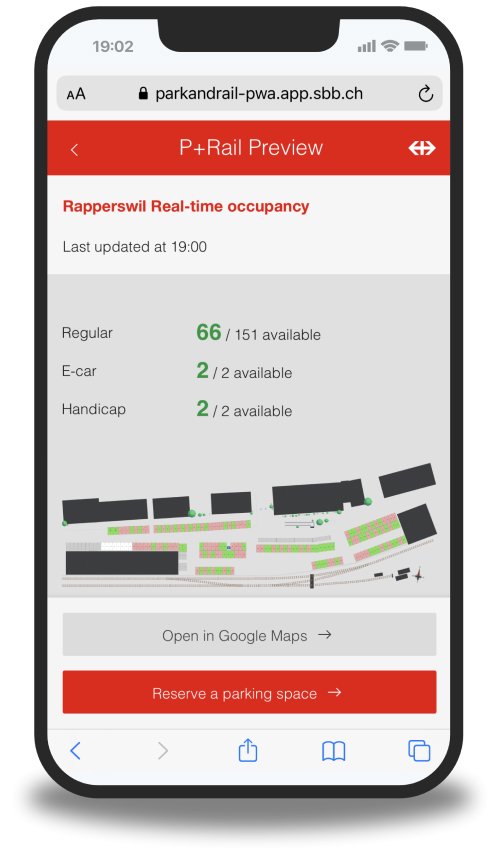Partners in the Spotlight
Selected integrations
AXIS ACAP - Parquery in-camera
Fotokite - Parking & Traffic Surveys
Parquery works with ANY camera

A smart-parking pilot that uses Internet Protocol (IP)-cameras and cloud-based Artificial Intelligence (AI) is currently helping SBB, the Swiss Federal Railways, assess the suitability of smart parking technology to address future mobility challenges. In May 2020, SBB and Parquery launched a pilot project together on the P+Rail facility of Rapperswil in North-Eastern Switzerland as part of SBB’s vision to create a door-to-door transport system that seamlessly integrates individual mobility and public transport.
Park and ride (P+Rail or P+R) facilities form the tie between personal car travel and public transport. At 550 train stations, SBB provides nearly 30’000 car parking spots, creating a convenient link for their customers to leave their cars and continue their journey by public transport.
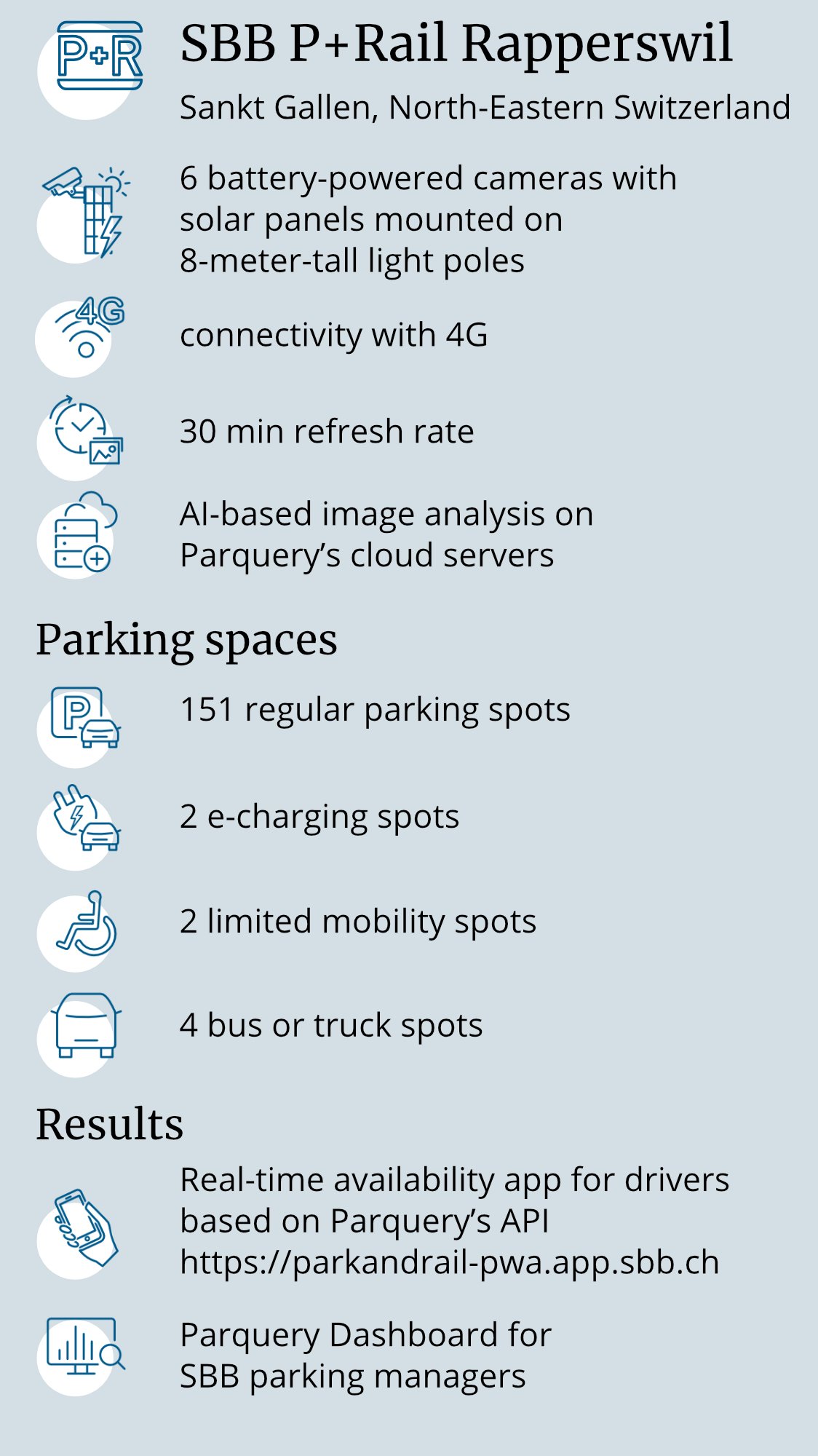
Since May 2020, Parquery’s smart parking solution tracks available and occupied parking spaces in real-time using camera images and AI, and collects statistical data on parking behavior and usage. Six cameras monitor the 150 car parking spaces in Rapperswil, including 2 reserved for people with limited mobility, and 2 e-charging spots for electric cars.
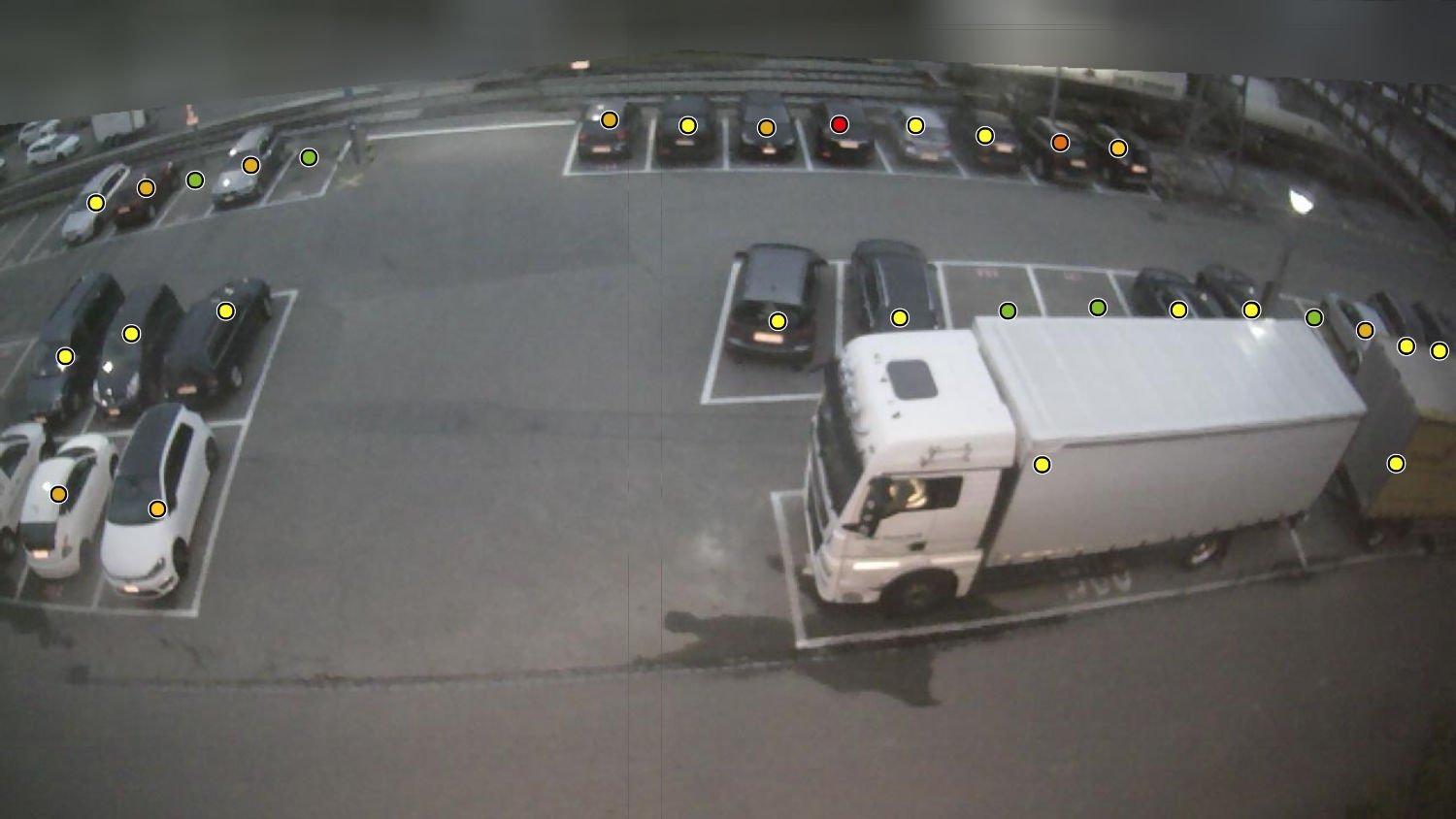
Finding ideal mounting points for the cameras was one of the challenges in this project since it requires balancing several factors. Ideally, cameras are mounted as high as possible: the higher, the more parking spots each camera covers, and a near-bird-view reduces the risk of one vehicle occluding another. Although very tall masts are available on-site that are part of the railway infrastructure, SBB decided to use light poles instead due to the dangers of traction current and safety concerns.
This left two choices for mounting the cameras: SBB’s own 2-3 meter high light poles in the car park and municipal ones by the side of the access road that are 8 meters tall. Although using municipal poles has associated issues of administrative authorization and the question of power supply, a high installation point means fewer cameras are needed and reduces the risk of occlusions. SBB decided on the option of six cameras mounted on municipal masts to reduce the number of cameras, the associated cost, and the visual impact. Using battery-powered cameras with solar panels for independent power supply minimized the authorizations required and facilitated a fast project deployment.
Learn more how Parquery optimizes camera coverage
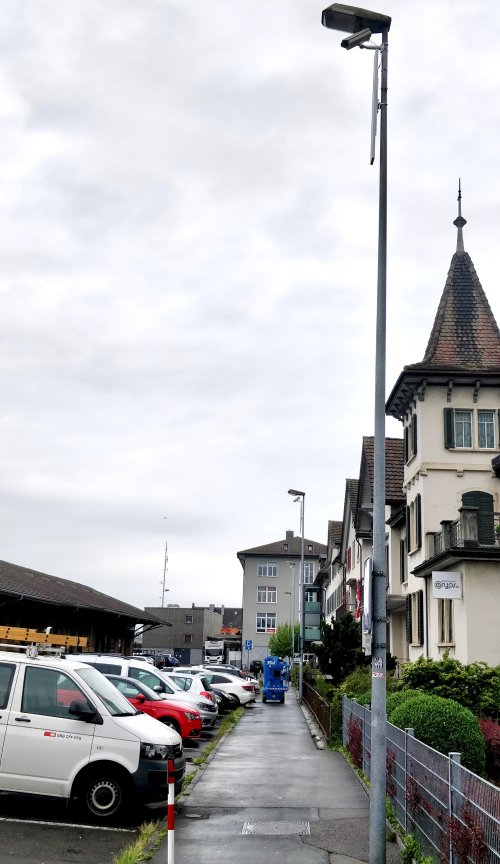
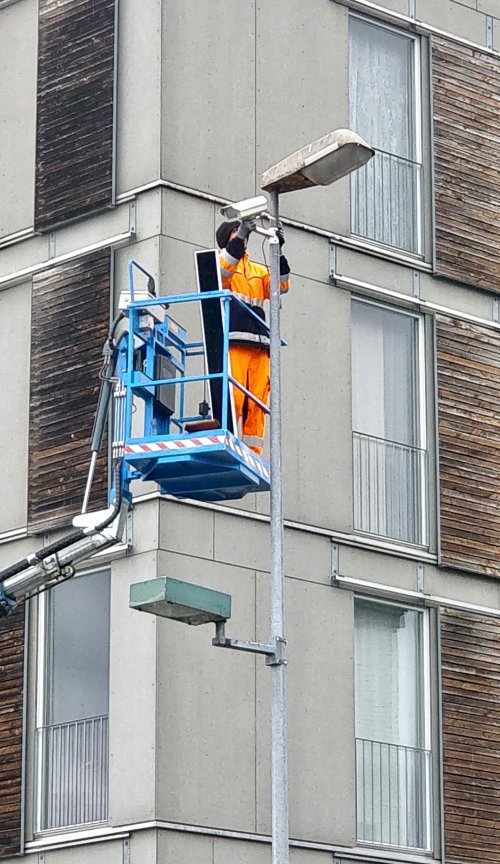
Parquery launched the project as an all-in-one solution for SBB: they offered project planning, determined the number, type, and locations of the cameras using software simulations, the camera’s autonomous power supply and networking solutions, and procured, assembled, and configured the hardware ready for installation on site. From the moment SBB’s innovation department contacted Parquery to the deployed pilot project, it was only 6 months.
Moreover, Parquery’s approach led to a fast, efficient, and straightforward installation of the hardware on the premises. Within about 2.5 hours from taking the first one out of the box, all six cameras and solar panels were mounted and configured by SBB’s installer under the guidance of a Parquery employee. Once the cameras were in place, the first images arrived on Parquery’s servers within minutes, and SBB could access the parking occupancy data.
Parquery and SBB take privacy very seriously. Firstly, the monitored area is strictly limited to what is required for the smart parking service. Surroundings that cannot be excluded by rotating or shifting the camera view are blurred and made unrecognizable. Secondly, images contain no private data. Faces and number plates are automatically blurred and anonymized before processing, which guarantees that neither people nor vehicles can be identified from an image.
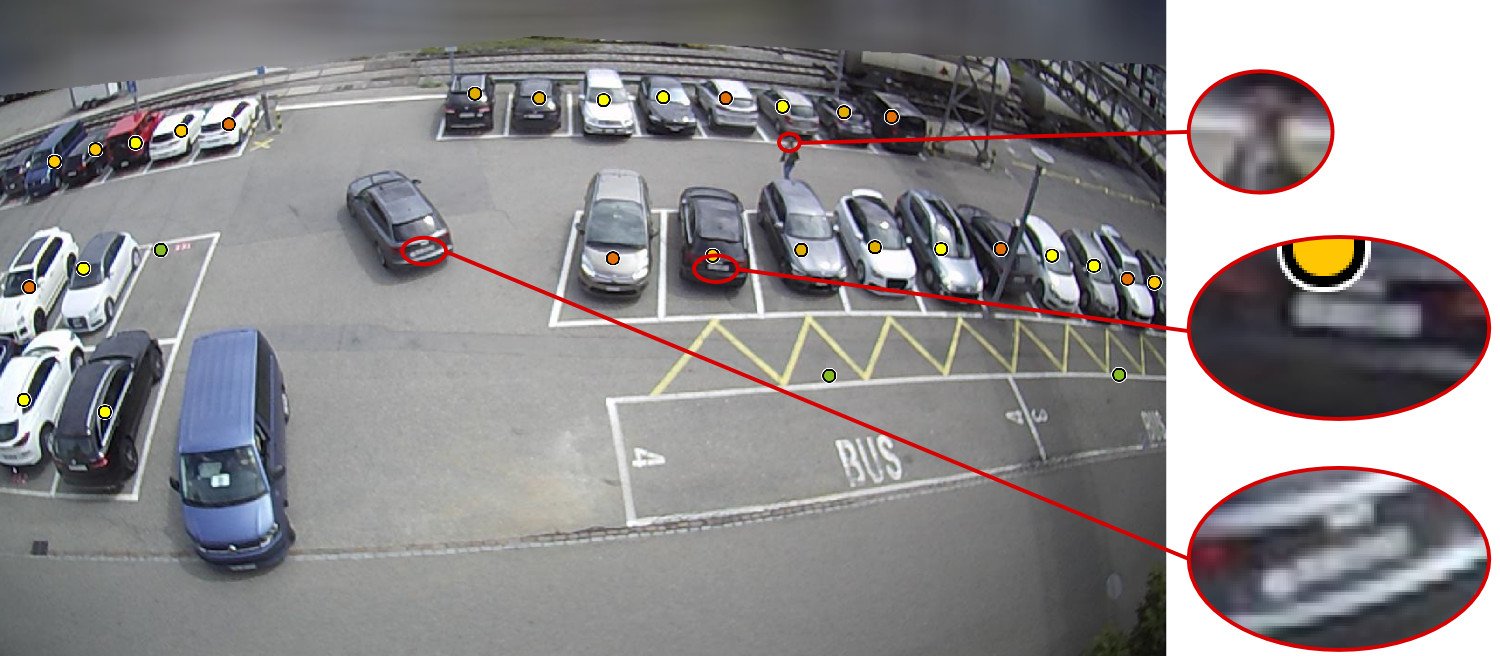
Initially planned as a 6-month pilot, the successful project was extended for another 2 years after an unusually overcast and snowy winter, which is a challenge for solar-powered installations. SBB also broadened the project’s scope, and the data is now also available to their customers on their P+Rail Preview Application. This progressive web app shows the availability of parking spaces, so their customers know if they will find a free parking space before they even set off. Having received very positive customer feedback, SBB presently considers including the real-time data in their native P+Rail App that sells parking tickets for over 200k parking lots in Switzerland.
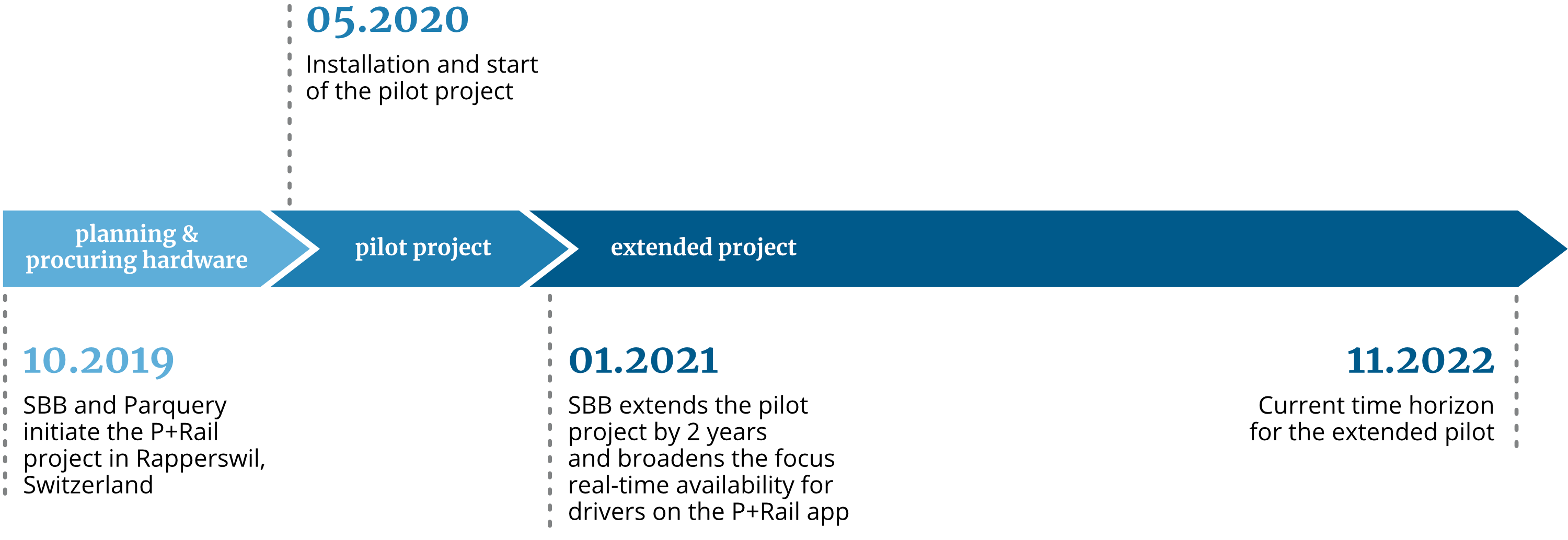
SBB is the major player and driver of innovation in Switzerland’s public transport system. Parquery is a leading pioneer in scalable, reliable, and affordable smart parking solutions. With their joint P+Rail pilot project in Rapperswil, SBB and Parquery are exploring and investing in tomorrow’s travel solutions, thus opening possibilities for an attractive, diverse future of mobility that seamlessly integrates different transport modalities.
The smarter the parking facilities at our stations, the greater the willingness of our customers to travel longer distances by train. This reduces motorized private transport, which has a positive effect on the climate balance.
Fabienne Barmettler, Innovation Portfolio Manager, SBB AG
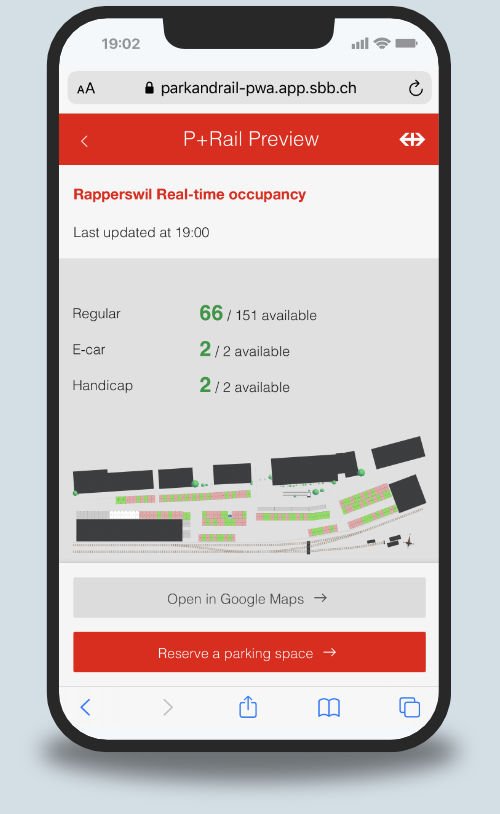
P+Rail facilities are the link between personal car travel and public transport. Enhancing them with smart parking capabilities helps SBB optimize parking space utilization and operational planning. Furthermore, the pilot project allows SBB to gain valuable insights into the feasibility of deploying these technologies on a larger scale. The real-time information about parking availability is now also available on SBB’s P+Rail app, so their customers know if they will find a free parking space before they even set off. Gone is the hassle of driving around in search of a spot. Switching to the train or bus has become more efficient and convenient.
SBB P+Rail Preview web application shows the real-time availability of parking spaces in Rapperswil.
Explore real-time availability of parking spaces in P+Rail Rapperswil and other test locations
Download SBB's P+Rail App for Android or iOS.
More information on SBB P+Rail
